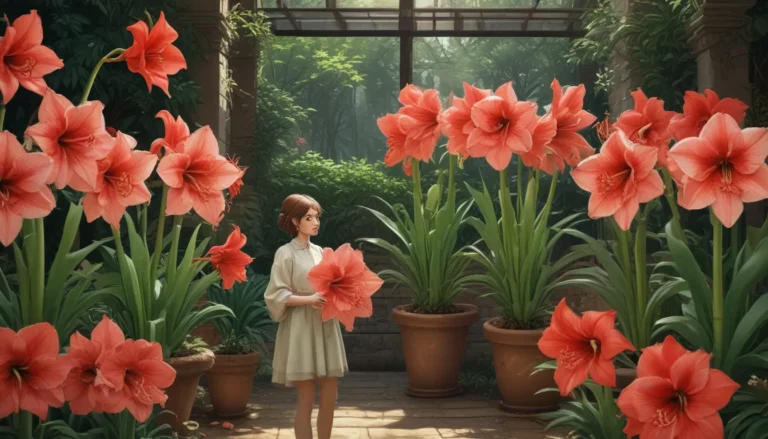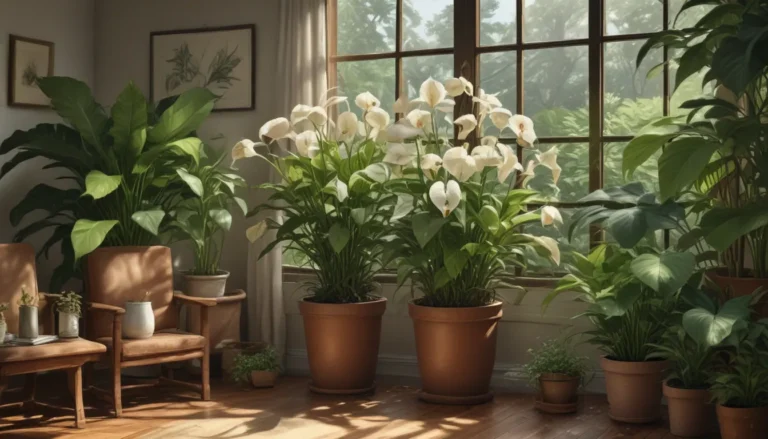A Comprehensive Guide to Growing and Shaping Ponytail Palms as Bonsai

Are you looking to add a touch of uniqueness to your bonsai collection? Look no further than the ponytail palm. With its distinctive trunk and elegant leaves, this plant is a popular choice for bonsai enthusiasts looking to add a bit of flair to their indoor collection.
In this guide, we’ll explore everything you need to know about growing and shaping ponytail palms as bonsai. From planting to care to shaping techniques, we’ll cover it all. So, if you’re ready to take your bonsai game to the next level, let’s dive in!
What Is a Ponytail Palm Bonsai?
First things first, let’s clear up a common misconception – ponytail palms are not actually palms at all. Genetically, they are classified as part of the asparagus family and the Nolinoideae subfamily. Despite the confusion, these plants are easily identifiable by their bulbous base, scaly trunk, and stringy foliage.
The unique shape of the ponytail palm is a result of its adaptation to survive in dry climates. The bulbous base acts as a canteen, storing water for the plant during lean times. In its natural habitat, this plant can grow up to 30 feet tall, but when grown as bonsai, it stays nice and compact without much effort.
When it comes to caring for ponytail palm bonsai, they are relatively low maintenance. They are drought-tolerant and can thrive in indirect lighting, making them a great choice for indoor growing. In fact, they can even tolerate the dry heat of the typical winter home environment.
Planting
Whether you purchase a pre-made ponytail palm bonsai or start with a young transplant, the planting process is relatively straightforward. Use a well-draining potting substrate designed for semi-tropical succulents, and ensure the container has proper drainage.
If you’re starting with a young plant, you have the opportunity to shape it the way you want. With proper pruning and training, you can encourage branching and create a bushy form reminiscent of the plant’s appearance in the wild.
Shaping
Pruning and shaping your ponytail palm bonsai is essential for maintaining its desired form. By trimming back the trunk and green shoots, you can control the plant’s growth and create a visually appealing shape. Remember to remove any dead or unattractive leaves to keep your bonsai looking its best.
If you’re starting with a young plant, you have the opportunity to shape it from the beginning. By chopping off the top of the plant during the dormant season, you can encourage branching and create a more bushy form.
Care
One of the key aspects of caring for ponytail palm bonsai is proper watering. In the winter, these plants require very little water, replicating the conditions of their native habitat. Allow the soil to dry out completely between waterings to prevent overwatering.
Fertilize your ponytail palm bonsai in the spring with a slow-release bonsai fertilizer. Be mindful not to over-fertilize, as these plants are sensitive to salt. If you notice the leaf tips turning brown, adjust your watering routine to ensure you’re not over- or under-watering.
Placement is also crucial for the health of your bonsai. Ponytail palms thrive in sunny locations with bright, indirect light. If placed in a southern-facing window, your plant will receive the light it needs to grow and thrive.
Species and Cultivars to Select
There are several species, cultivars, and forms of ponytail palms that make beautiful bonsai specimens. From B. recurvata with its curved leaves to ‘Gold Star’ with its vibrant yellow stripes, there are plenty of options to choose from.
Selecting the right species or cultivar for your bonsai collection will depend on your personal preference and the look you want to achieve. Consider the characteristics of each variety and choose one that aligns with your aesthetic goals.
Managing Pests and Disease
Like all houseplants, ponytail palm bonsai are susceptible to pests and diseases. Some common pests to watch out for include aphids, mealybugs, and spider mites. Keep an eye on your plant for any signs of infestation and take prompt action to address the issue.
For aphids, a blast of water can help dislodge the insects from your plant. Mealybugs can be removed with isopropyl alcohol or treated with insecticidal soap. Spider mites can also be controlled with insecticidal soap and regular spraying.
When it comes to diseases, bacterial leaf streak and stem and root rot are potential threats to ponytail palm bonsai. Prune away infected leaves and reduce watering if you suspect your plant has a disease. Proper care and maintenance can help prevent these issues from occurring.
Conclusion
Ponytail palms make a dramatic statement as bonsai, thanks to their unique appearance and ease of care. With the right planting, shaping, and care techniques, you can enjoy a beautiful and healthy ponytail palm bonsai in your home.
If you’re looking to add a touch of flair to your bonsai collection, consider adding a ponytail palm to the mix. Its distinct appearance and low-maintenance nature make it an excellent choice for both beginner and experienced bonsai enthusiasts. So, why not give it a try and see the magic of ponytail palm bonsai for yourself!
We hope you found this guide helpful and informative. If you have any questions or want to share your growing adventures, feel free to leave a comment below. Happy gardening!





